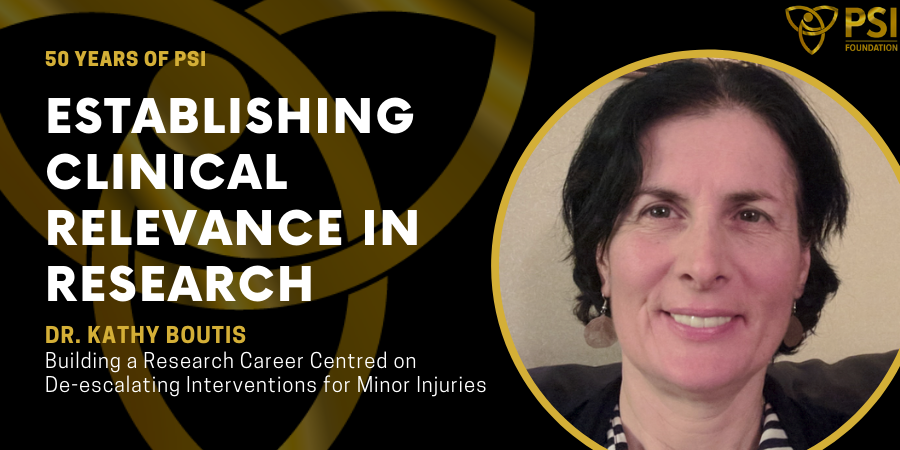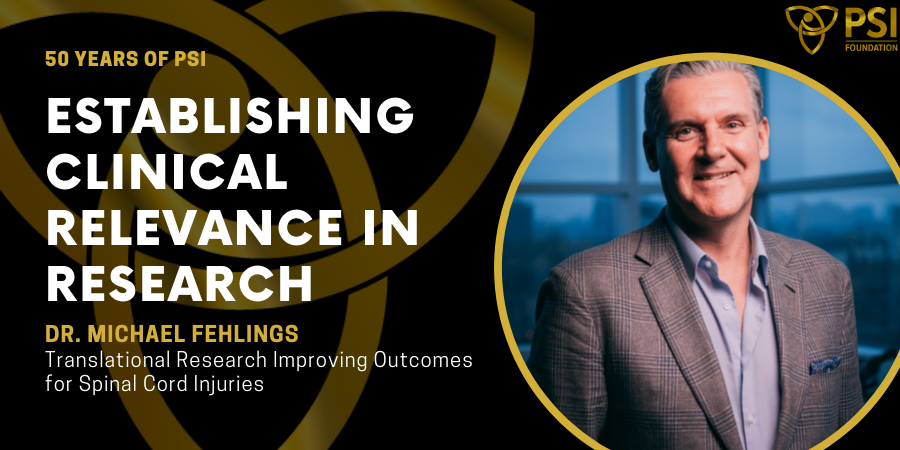“PSI has a long history of funding important clinical and practical questions that have a high potential to improve the practice of medicine.” – Dr. Kathy Boutis
As a pediatric emergency physician at Toronto’s Hospital for Sick Children (SickKids), Dr. Kathy Boutis has treated many children with minor musculoskeletal injuries. Her research program, with significant support from PSI Foundation, has helped to shape how physicians at SickKids and around the world treat and manage these common injuries.
“I am first a doctor and I love being a doctor,” she says. “I wanted to do research in an area where emergency physicians could lead the path to change using high quality evidence.” Hundreds of thousands of children present to Ontario’s emergency departments with minor musculoskeletal injuries every year, and Dr. Boutis recognized the impact she could have by studying them.
She began working with Dr. Suzanne Schuh on a project to predict the need for radiography in children with ankle injuries, the results of which were published in The Lancet in 2001. In 2002, she received her first PSI Foundation grant as a principal investigator, comparing a removable brace to a cast for low-risk ankle fractures. The results demonstrated that the brace allowed children to recover and return to physical activity quicker than casting, and was more cost-effective and preferred by patients. These two studies formed the building blocks of what was to become a successful research program over the next two decades.
Research aims to help physicians “choose wisely”
Dr. Boutis has since been principal investigator on three more PSI grants, all of which have focused on de-escalating interventions for minor musculoskeletal injuries in children. Casting and other interventions can occasionally cause complications, but the benefits of de-escalating the interventions go beyond reducing complications and include the potential to reduce health care costs and improve the quality of life for injured children and their families.
“Our overall goal is to optimize the diagnosis and management of pediatric musculoskeletal injuries. It appeals to the current interest and demand in choosing wisely,” she says. “We need to look at managing these common problems to be more resource-efficient and convenient for patients.”
She and her team received PSI funding to evaluate the Low Risk Ankle Rule, a clinical guideline for when children presenting with ankle injuries benefit from ankle x-rays. Implementing the rule safely reduced the rate of x-rays given to children by about 50%. This rule is now being adopted by emergency departments all over the world. She then noticed that one type of common minor ankle injury, presumed to be a fracture, was treated for weeks with a cast, which seemed unnecessary. PSI funded a project that studied this injury using magnetic resonance imaging (MRI) and found that most kids with this injury, in fact, did not have a fracture – rather they had ankle sprains that could be managed with rest, ice, and return to activities when the child was ready. Her most recent grant awarded by PSI in 2019 is extending these principles to a minor leg fracture in toddlers, with the hopes of creating an equally safe but more convenient treatment for these injuries. “Parenting a toddler is challenging enough without the addition of restricting their activity for weeks,” she says. “If we can make managing these injuries easier, it’s a win for parents and the health care system.”
Growing out of her PSI-funded work, it became obvious that emergency physicians found pediatric image interpretation challenging, which led to medical errors. As a result, Dr. Boutis also implements cutting-edge medical education theory into the teaching of medical image interpretation, such as that required for x-rays and ultrasounds. This research eventually led to the development of ImageSim, an award winning and nationally acclaimed innovative web-based image interpretation learning system.
Study results have changed clinical guidelines around management of minor injuries
Studying minor injuries in pediatric emergency medicine is a niche area of research that has limited funding opportunities, and Dr. Boutis says that PSI Foundation funding has been critical. “PSI has been pivotal to my work,” she says. “They have always been very fair and transparent. I feel very positively about the organization and their mission.”
PSI funding has allowed Dr. Boutis to complete high quality multicentre trials that have made a significant impact in the field. She has published in numerous high impact journals, and her work has caught the attention of leading textbooks in the field. These efforts led to the development of clinical guidelines around management of minor musculoskeletal injuries internationally – which helped her realize her goal of making an impact on emergency medicine practice. “If my work never got implemented at the bedside, it would feel like all the evidence I derived failed,” she says. “One of the best compliments I receive is from my colleagues is that it makes them better doctors. You could not get a better compliment than that.”



